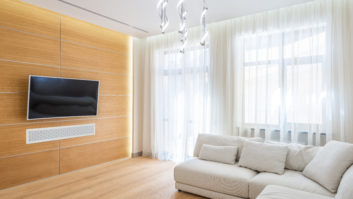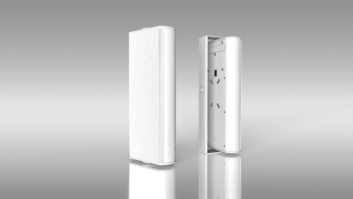Suppliers are coming to CES with multi-room-A/V and home-control solutions that run the gamut from do-it-yourself setups to those requiring the services of a professional installer.
Some solutions, including new products from D-Link, use a home’s Ethernet or Wi-Fi network to distribute content to A/V systems. Some use Z-Wave wireless to distribute control signals to lights and other home subsystems. And a two-zone, two-source multiroom-audio system from Klipsch (see accompanying story) sends music and control signals wirelessly to wireless-speaker/LED lights that screw into existing recessed-lighting fixtures in the ceiling.
Products suitable for retrofit applications are gaining market momentum given the depressed state of new-home construction following 2005’s near-historic high. Construction hit a decades-long peak of 1,715,000 single-family units in 2005, Census Bureau statistics show. Although the methodology for collecting data from 1945 to 1958 differs from Census Bureau methodology used since 1959, it is “likely” that single-family starts were higher in 2005 than in any other year but 1950, said Bernard Markstein, VP of forecasting and analysis at the National Association of Home Builders (NAHB).
Here’s a sampling of what dealers will find at CES:
BuLogics: In the Z-Wave Pavilion exhibit, the Philadelphia company will display a Z-Wave-equipped wireless controller that connects a home’s Z-Wave-connected systems to smart utility meters or utility-provided energy service portals (ESPs) equipped with the incompatible ZigBee Smart Energy (SE) standard.
The device, called the Smart Grid Home Controller, comes with expansion slots that accept modules incorporating ZigBee SE or other technologies, such as Wi-Fi or FlexNet, to connect to utility meters. It also plugs into an Ethernet connection.
With such controllers, consumers could program Z-Wave-connected systems to automatically shut off when a utility’s price per kilowatt hour hits a certain level. The pricing information would be transmitted by utilities to the smart meter or ESP.
“Adding ZigBee devices [such as ZigBee-enabled lights] to the Smart Grid is a grueling security process,” the company said in explaining why it developed the product.
D-Link: The company plans second-quarter shipments of its two latest digital media adapters (DMAs), one of which accesses many more on-line audio and video streaming sites than previous models. Both connect to a networked PC or NAS as well as directly to USB-equipped devices to reproduce music, 1080p video and photos. They connect to audio systems and, via HDMI 1.3, to HDTVs.
The $199-suggested Boxee Box, which looks like a box rather than an audio or PC component, features embedded Wi-Fi 802.11n, ability to stream 1080p video, RF remote, dedicated graphics processor, surround-sound passthrough, and Flash 10.1 video compatibility. It connects directly to dozens of audio and video streaming sites and photo sharing sites, a spokesman said.
The $119-suggested Pebble resembling a well-weathered stone, offers most of the features of the Boxee Box but accesses fewer Internet sites and lacks embedded 802.11n. It connects to an optional wireless 802.11n dongle, and it streams HD video but not 1080p.
Jasco/GE: Four new GE-branded Z-Wave-equipped home-automation devices from Jasco are a wall-mount Group and Scene Controller for Z-Wave lights, an Energy Monitoring Module, and two Z-Wave remotes.
The $79.99 controller, which operates on two CR2032 batteries, mounts to a wall via screws or double-sided tape to control four groups and four scenes of Z-Wave-equipped lights. The device is due in March.
The $74.99-suggested energy monitoring module plugs into any wall outlet to track the electricity usage of small appliances, TVs, lamps and similar devices plugged into it. The module transmits captured usage data to any Z-Wave device that interprets the data for consumers. The module also lets consumers remotely turn on/off any devices plugged into it. It ships in March.
The two new remotes add control of Z-Wave-equipped door locks via AES-128 encryption.













